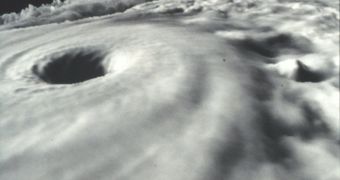Although Ike only registered as a category 2 hurricane on the Saffir-Simpson measuring scale, it eventually proved to be the third most devastating storm in American history, after Katrina and Andrew, as it surpassed Katrina at certain moments (the most costly storm ever) in intensity. This proves that a new approach on measuring a storm's overall features and effects is required.
The Saffir-Simpson scale only takes into consideration the wind speed and the storm surges height, but these have been recently demonstrated to be far from enough, as related to the consequences of such a natural phenomenon. Besides the factors taken into account by the respective scale, there are others that should be appropriately addressed, such as hurricane size (the area that its winds cover) and longevity (for how long even less strong winds exert their impact on a surface). Also, as it has recently been the case during Ike's sweep over the land, the longer exposure to hurricane winds determines the formation of bigger offshore waves and storm surges. Ike's surge was twice the size expected to be generated by a category 2 hurricane.
The Saffir-Simpson scale divides storms into five categories. The first is characterized by winds of 74-95 mph (119-153 km/h), 4-5 feet above normal storm surge. No important damage is done to buildings, with little threat to trees. The second one has 96-110 mph (154-177 km/h) winds, storm surge 6-8 feet above normal, poses little threat to buildings and more to trees. Category 3 storms bring 111-130 mph (178-209 km/h) winds and storm surge usually 9-12 feet above normal. Small buildings may suffer structural damage and trees may be pulled out. The fourth level sees winds reaching 131-155 mph (210-249 km/h) and the storm surge 13-18 feet above normal; more structural damage to residences while trees and signs are blown down. The last and most powerful category comprises winds more powerful than 155 mph (249 km/h) and storm surge greater than 18 feet above normal. Massive destruction of buildings and total damage of trees and signs are reported, thus major evacuations may be required. Only three cases have been recorded so far: Labor Day Hurricane (1935), Camille (1969) and Andrew (1992).
Obviously, this is not a precise enough scale, and that is why researchers came up with alternatives. One of these is the Hurricane Severity Index, which rates storms on a scale ranging from 1 (the weakest) to 50 (the strongest), taking into consideration both the intensity and the wind field size. This scale gave Katrina (category 3) a 35, Charley (category 4) got 23, while Ike (category 2) received 30. Another scaling system is called Integrated Kinetic Energy (or IKE – a bit confusing, right?) and was developed by Mark Powell and Timothy Reinhold. The IKE of a storm is calculated as the total of the winds on a hurricane's overall extent, thus obtaining its energy (Ike's IKE was at times higher than Katrina's). This is a far better way to estimate the damaging potential of a storm.

 14 DAY TRIAL //
14 DAY TRIAL //